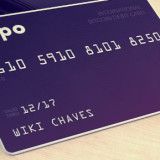By Curtis Arnold and Donna Freedman
A recent survey from the National Foundation for Credit Counseling indicates that more people would be embarrassed to admit their credit scores (30%) than their weight (12%).
While crash diets don’t usually work and can be unhealthy, it is possible to change your credit score fairly quickly. But just as with weight loss, “quickly” is a relative term. Seeing any improvement could take 30 to 60 days, according to Liz Weston, personal finance columnist and author of “Your Credit Score, Your Money & What’s At Stake.”
But nothing will change at all if you just sit there on the couch, eating Cheetos and charging items on the Home Shopping Network. So get moving!
The first thing to do is get a copy of your credit report from AnnualCreditReport.com. The three major credit reporting bureaus must give you one free copy per year, so plan to order one every four months. Another great resource is WisePiggy which provides a truly free credit score, advice and information, all with no strings attached.
Then use one or more of the following tips to boost that three-digit number that has increasing power over our everyday lives.
1. Dispute errors. Mistakes happen. You can dispute errors online through Equifax, Experian and TransUnion. After you’ve fixed any foul-ups, you might try to…
2. Negotiate. You can’t deny that you stopped paying a credit card bill when you were unemployed last year. But you can ask creditors to “erase” that debt or any account that went to collection. Write a letter offering to pay the remaining balance if the creditor will then report the account as “paid as agreed” or maybe even remove it altogether. (Note: Get the creditor to agree in writing before you make the payment.)
You might also be able to ask for a “good-will adjustment.” Suppose you were a pretty good Visa customer until that period of unemployment, when you made a late payment or two – which now show up on your credit report. Write a letter to Visa emphasizing your previous good history and ask that the oopsies be removed from the credit report. It could happen. And as long as you’re reading the report, you need to…
3. Check your limits. Make sure your reported credit limits are current vs. lower than they actually are. You don’t want it to look as though you’re maxing out the plastic each month. If the card issuer forgot to mention your newly bumped-up credit limit, request that this be done.
4. Get a credit card. Having one or two pieces of plastic will do good things to your score – if you don’t charge too much and if you pay your bills on time. In other words, be a responsible user of credit. Look for the best deals on CardRatings.com.
Can’t get a traditional card? Try for a secured credit card, taking care to choose one that reports to all three major credit bureaus. And if you can’t get a secured card, you might ask to…
5. Become an authorized user. This means convincing a relative or friend to be added to his or her existing credit card account. If you’ve had a checkered financial history, don’t be surprised if you hear the word “no” a lot. But you might luck out, especially if you’re a young person who has no history of poor credit use.
Offer to put an agreement in writing stating how much you can spend and how you will get your share of the bill to the cardholder. Then “do your part and use the card responsibly,” says Beverly Harzog, author of “Confessions of a Credit Junkie.” In other words, don’t buy more than you can afford and don’t leave your co-signer hanging when the bill is due. The point is to learn to use credit responsibly.
6. Under-use your cards. Yes, we did just tell you to get credit by any means possible. But don’t whip out the plastic to pay for everything. The “credit utilization ratio” should be no more than 30% and ideally even less. Harzog says that a 10% credit utilization ratio will “maximize this part of your FICO score.”
For example, suppose your Mastercard has a $1,500 limit and you routinely charge a grand a month. It doesn’t matter if you pay it all off before it’s due. What matters is the credit bureaus think “Curtis is using two-thirds of his credit! What a spendthrift!” And if you’re a cash-free kind of guy? Then try to…
7. Raise your credit limit. Ask your creditors to increase your limit, i.e. making that Mastercard good for up to $3,000. Be careful with this one, though: It works only if you can trust yourself not to increase your spending habits accordingly. Otherwise you’ll be right back to using 66% of your credit each month and how will that look?
8. Don’t close any cards. Canceling a credit card will cause your available credit to drop, which doesn’t look good to a bureau. One way to keep a card active is to use it for a recurring charge such as a utility bill. There’s room for that in your budget, right?
9. Mix it up. Using a different kind of credit can make for a modest boost to your score. For example, you might take out a small personal loan from the credit union or buy a piece of furniture or appliance on installment (but only if you’re 100% sure you can and will meet the payment schedule).
10. Pay your bills on time. Seriously. Your payment history – including the ones you pay late or skip altogether – makes up a whopping 35% of your FICO score. If you’re absent-minded or merely overwhelmed (Hi there, parents of young children!), then for heaven’s sake, automate your payments. Even better than paying on time is to…
11. Pay your bills twice a month. Using too much of your credit limit at any given moment doesn’t look good. Suppose your limit is $3,000 and a month’s worth of havoc (car repair, doctor bills, plane ticket for kid to get to college) means you’ve charged up $2,9000. Sure, you plan to pay in full by the 18th of the month – but until then it looks like you’re maxing out yet another card.
Instead, make one payment just before the statement closing date and second one right before the due date. The first will likely reduce the balance that the credit bureaus see and the second makes sure you won’t pay interest or a late fee.
(Curtis Arnold regularly writes and blogs about credit, debit and related personal finance topics and founded CardRatings.com and BestPrepaidDebitCards.com, which provides advice and rates and reviews credit cards, prepaid debit cards and related products. He is a regular Forbes contributor and is regularly featured by national media outlets including The Wall Street Journal, The Today Show and Good Morning America for his expertise in the credit industry.
Donna Freedman writes about personal finance for Money Talks News and other websites and magazines, and blogs at DonnaFreedman.com.)









